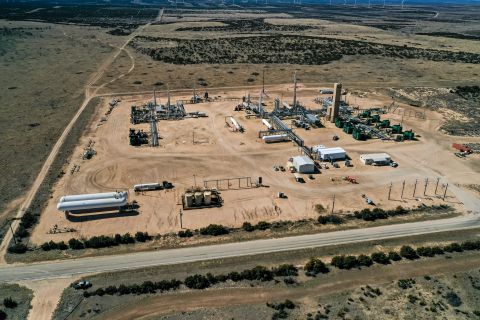
(Source: LuckyStep/Shutterstock.com)
Big Data is one of the most significant trends in the hydraulic fracturing business. But realizing the potential of cloud database systems has been limited. Identifying and understanding a complex set of stakeholder needs early in the development process are the keys to avoiding problems and creating long-term solutions.
Cloud systems offer many opportunities for improving hydraulic fracturing execution, efficiency and results. Huge volumes of data, remote operations and multiple stakeholders create a dazzling array of potential applications ranging from managing fracturing fleet maintenance to integrating field operations with enterprise information portals. Lessons learned by other industries clearly demonstrate that it is important to create a roadmap before embarking on this journey.
The core value of a cloud system is the ability to turn the data into useful, actionable information. However, initial efforts have had limited success in achieving this, largely because the applications are either so narrowly focused or so broadly applied that they miss a substantial portion of the potential value of the cloud at either end of the spectrum. The real solution resides somewhere in between.
Finding that middle ground requires engaging operators, pressure pumping companies and other stakeholders in a wide-ranging conversation about their experience, immediate needs and future objectives. Stakeholder interests must be understood across a full scope of applications, including operations, accounting and maintenance. It is a complex challenge. A recent AFGlobal market analysis, not surprisingly, yielded hundreds of issues and areas where cloud computing can and will offer a solution.
This huge potential is perhaps the most immediate challenge faced in implementing cloud-based systems. Sorting out priorities and realities prompts the next step, which is assessing the relative values of resolving specific problems. That leads to identifying applications that can be implemented immediately to create the greatest value. This involved development process is further complicated by the need to do it all within a framework that also recognizes futures steps, both known and unknown.
AFGlobal’s market analysis pointed to initial applications centered on managed maintenance of pressure pumping equipment to reduce failure in the field. Most of the maintenance on a hydraulic fracturing spread occurs with the fracturing units, and there are a lot of them onsite. While engines and transmissions can fail, most of the day-to-day maintenance involves the pumps—particularly the fluid ends.
Routine maintenance procedures conducted between stages and jobs, such as valve changes and repacking, make a cloud system well suited to tracking and scheduling the process. Accessing this large volume of data presents many opportunities to improve job performance through consistent, dependable operations and greater efficiency. For example, sophisticated maintenance schedules can easily recognize less demanding idle time accumulated by a backup pump; accumulated wear data can support predictive analytics so that pump deployment can be managed relative to the job requirements.
These maintenance capabilities address a key operator objective of achieving a smooth, uninterrupted job. Onsite equipment failure sets a cascade of problems in motion. Job safety and execution are compromised when people are scrambling to keep the job going, maintenance and repairs add time to one job and delay the next, and diminishing job quality hurts well performance and complicates design assessment.
Underlying all these are massive amounts of data. The advantage that cloud systems offer is the ability to collect and analyze it. Success requires a conversation with all the stakeholders as well as careful planning early in the development stage to meet and anticipate the complex set of needs presented by hydraulic fracturing operations.
Recommended Reading
Midstream M&A Adjusts After E&Ps’ Rampant Permian Consolidation
2024-10-18 - Scott Brown, CEO of the Midland Basin’s Canes Midstream, said he believes the Permian Basin still has plenty of runway for growth and development.
Dividends Declared Sept.16 through Sept. 26
2024-09-27 - Here is a compilation of dividends declared from select upstream, midstream and service and supply companies.
CEO: Breakwall Providing Capital as RBLs ‘Materially’ Decrease
2024-10-09 - Breakwall Capital is stepping in to bridge the gap from the historic days of reserve-based lending, Breakwall Managing Partner and co-CEO Jamie Brodsky said at Hart Energy's Energy Capital Conference in Dallas.
EQT to Cut Workforce 15% Following Close of Equitrans Acquisition
2024-10-02 - EQT Corp. closed its $5.5 billion all-stock buy of Equitrans Midstream Corp. on Sept. 22.
BP Profit Falls On Weak Oil Prices, May Slow Share Buybacks
2024-10-30 - Despite a drop in profit due to weak oil prices, BP reported strong results from its U.S. shale segment and new momentum in the Gulf of Mexico.
Comments
Add new comment
This conversation is moderated according to Hart Energy community rules. Please read the rules before joining the discussion. If you’re experiencing any technical problems, please contact our customer care team.





